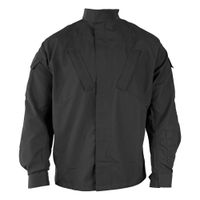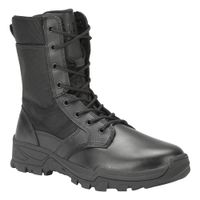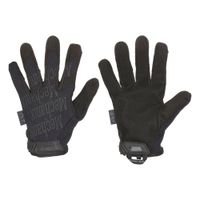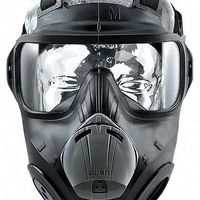Call +(254) 703 030 000 / 751 483 999 / 721 704 777
- Home
- Security
- Military Tactical Public Security Equipment
- Clothing Protective Equipment For Military Ems Law Enforcement
.....Read More
Frequently Asked Questions
What are the essential clothing items for military personnel?
Essential clothing items for military personnel typically include:
1. **Uniforms**: Standardized attire for identification and cohesion, including dress uniforms for formal occasions and combat uniforms for field operations.
2. **Boots**: Durable, supportive footwear designed for various terrains and conditions, often waterproof and with reinforced soles.
3. **Headgear**: Includes helmets for protection in combat and caps or berets for formal and everyday use.
4. **Outerwear**: Jackets and coats for protection against weather conditions, often insulated and water-resistant.
5. **Body Armor**: Protective vests and plates to safeguard against ballistic threats.
6. **Gloves**: Tactical gloves for protection and dexterity in handling equipment and weapons.
7. **Socks**: Moisture-wicking and cushioned for comfort during long periods of wear.
8. **Undergarments**: Breathable and moisture-wicking to maintain hygiene and comfort.
9. **Belts**: Utility belts for carrying essential gear and equipment.
10. **Camouflage Gear**: Clothing designed to blend with the environment, crucial for concealment in operations.
11. **Rain Gear**: Waterproof clothing to maintain dryness in wet conditions.
12. **Cold Weather Gear**: Thermal layers and accessories like balaclavas and scarves for extreme cold.
13. **Eyewear**: Protective goggles or sunglasses to shield eyes from debris and UV rays.
14. **Load-Bearing Equipment**: Vests and harnesses for carrying ammunition, tools, and supplies.
15. **Identification Tags**: Dog tags for personal identification and medical information.
These items are designed to ensure functionality, protection, and comfort in various operational environments.
What protective equipment is necessary for EMS workers?
Emergency Medical Services (EMS) workers require various protective equipment to ensure their safety while providing care. Key items include:
1. **Gloves**: Essential for protecting against bloodborne pathogens and bodily fluids. Nitrile gloves are preferred due to their resistance to punctures and chemicals.
2. **Masks and Respirators**: Surgical masks protect against droplets, while N95 respirators or higher-level protection are necessary for airborne pathogens.
3. **Eye Protection**: Goggles or face shields protect against splashes and respiratory droplets.
4. **Gowns and Aprons**: Used to protect clothing and skin from contamination, especially during procedures with a high risk of fluid exposure.
5. **Footwear**: Sturdy, closed-toe shoes or boots with slip-resistant soles protect against physical hazards and contamination.
6. **Helmets**: In situations with potential head injury risks, such as accidents or structural collapses, helmets provide necessary protection.
7. **Hearing Protection**: Earplugs or earmuffs are used in environments with high noise levels to prevent hearing damage.
8. **High-Visibility Clothing**: Reflective vests or jackets ensure visibility in low-light or high-traffic areas, reducing the risk of accidents.
9. **Body Armor**: In high-risk areas, bulletproof vests may be necessary to protect against violence.
10. **Personal Alert Safety Systems (PASS)**: These devices alert others if a worker is in distress or motionless, enhancing safety in hazardous environments.
11. **Hand Sanitizer and Disinfectants**: For decontaminating hands and surfaces when soap and water are unavailable.
12. **Communication Devices**: Radios or mobile phones ensure constant communication with team members and emergency services.
Proper training in the use and disposal of protective equipment is crucial to maximize safety and effectiveness.
How do law enforcement uniforms differ from military uniforms?
Law enforcement uniforms and military uniforms serve distinct purposes and reflect the differing roles of police officers and military personnel.
Law enforcement uniforms are designed for practicality and approachability. They typically consist of a standard shirt and trousers, often in blue, black, or brown, which are colors associated with authority and professionalism. The uniforms may include badges, name tags, and insignia that identify the officer's rank and department. Accessories such as belts, holsters, and body armor are common, providing functionality for carrying equipment like handcuffs, radios, and firearms. The design emphasizes accessibility to the public, aiming to convey trust and readiness to assist.
In contrast, military uniforms are designed for combat readiness and unit cohesion. They often feature camouflage patterns suited to various environments, such as woodland, desert, or urban settings, to enhance concealment. Military uniforms include insignia that denote rank, unit, and branch of service, fostering a sense of identity and hierarchy. They are equipped with tactical gear, such as helmets, vests, and boots, to protect and support soldiers in combat situations. The focus is on durability and functionality in diverse and challenging conditions.
While both uniforms symbolize authority and discipline, law enforcement uniforms prioritize public interaction and service, whereas military uniforms emphasize combat effectiveness and operational readiness.
What features should tactical gloves have for optimal protection?
Tactical gloves should have several key features to ensure optimal protection:
1. **Durability**: Made from high-quality materials like Kevlar, Nomex, or reinforced leather to withstand wear and tear.
2. **Cut Resistance**: Incorporate cut-resistant materials to protect against sharp objects.
3. **Impact Protection**: Include padded knuckles and reinforced finger joints to absorb shocks and impacts.
4. **Abrasion Resistance**: Use materials that resist abrasion to protect hands during rough activities.
5. **Grip**: Feature textured palms or silicone grips to enhance handling and prevent slippage.
6. **Dexterity**: Designed to allow full range of motion and fine motor skills without compromising protection.
7. **Heat and Flame Resistance**: Use materials that can withstand high temperatures and flames for fire-related tasks.
8. **Water Resistance**: Offer water-repellent properties to keep hands dry in wet conditions.
9. **Breathability**: Include breathable fabrics or ventilation to prevent sweating and maintain comfort.
10. **Touchscreen Compatibility**: Allow for the use of touchscreen devices without removing gloves.
11. **Adjustable Fit**: Have adjustable straps or closures for a secure and customizable fit.
12. **Anti-Vibration**: Incorporate anti-vibration technology to reduce hand fatigue during prolonged use.
13. **Chemical Resistance**: Provide protection against harmful chemicals if necessary for specific tasks.
14. **Lightweight**: Ensure the gloves are lightweight to prevent hand fatigue and enhance mobility.
15. **Reinforced Stitching**: Use double or triple stitching in high-stress areas for added durability.
These features collectively ensure that tactical gloves provide comprehensive protection while maintaining functionality and comfort for the user.
How do you choose the right tactical boots for stability and traction?
To choose the right tactical boots for stability and traction, consider the following factors:
1. **Outsole Material**: Look for boots with rubber outsoles, as they provide excellent grip and durability. Vibram soles are a popular choice for their superior traction on various surfaces.
2. **Tread Pattern**: Opt for boots with deep, multi-directional lugs. This design enhances grip on uneven terrain and prevents slipping in wet or muddy conditions.
3. **Midsole Support**: Choose boots with EVA or polyurethane midsoles for cushioning and shock absorption. This support is crucial for maintaining stability during prolonged wear.
4. **Ankle Support**: High-cut boots offer better ankle support, reducing the risk of sprains. Ensure the boots have a snug fit around the ankle without restricting movement.
5. **Fit and Comfort**: Proper fit is essential for stability. Ensure there’s enough room for your toes, and the heel should not slip. Consider trying boots with removable insoles for a customizable fit.
6. **Weight**: Lightweight boots reduce fatigue and improve agility. However, ensure they still offer adequate support and protection.
7. **Waterproofing and Breathability**: Waterproof boots with breathable membranes like Gore-Tex keep feet dry and comfortable, maintaining traction in wet conditions.
8. **Durability**: Look for boots made from high-quality materials like full-grain leather or ballistic nylon, which withstand harsh environments and provide long-lasting performance.
9. **Brand Reputation and Reviews**: Research brands known for quality tactical footwear and read user reviews to gauge real-world performance regarding stability and traction.
10. **Purpose and Environment**: Consider the specific environment and activities you’ll be engaging in. Different terrains may require specialized features for optimal performance.
By evaluating these factors, you can select tactical boots that offer the necessary stability and traction for your needs.
What components are included in a standard riot gear set?
A standard riot gear set typically includes the following components:
1. **Helmet**: A durable, impact-resistant helmet with a face shield to protect against projectiles and debris. It often includes a chin strap and padding for comfort and stability.
2. **Visor**: A clear, shatterproof visor attached to the helmet to shield the face from liquids, smoke, and other harmful substances.
3. **Body Armor**: This includes a chest protector, back protector, and sometimes side protectors. Made from materials like Kevlar or other ballistic fabrics, it provides protection against blunt force, stabs, and some ballistic threats.
4. **Shoulder and Elbow Pads**: These protect the joints from impact and allow for a range of motion while providing cushioning against blows.
5. **Gloves**: Reinforced gloves protect the hands from cuts, abrasions, and impacts. They often have hard knuckle protection and are made from cut-resistant materials.
6. **Leg and Knee Guards**: These protect the lower body from projectiles and impacts. They are usually made from hard plastic or composite materials and are padded for comfort.
7. **Boots**: Heavy-duty boots with reinforced toes and soles provide protection against sharp objects and improve stability and traction.
8. **Baton**: A collapsible or fixed baton used for defense and crowd control.
9. **Shield**: A lightweight, transparent shield made from polycarbonate or similar materials, used to deflect projectiles and push back crowds.
10. **Gas Mask**: Protects against tear gas, smoke, and other airborne irritants. It includes a filter and a secure fit to ensure clean air intake.
11. **Communication Equipment**: Radios or other devices for maintaining contact with team members and command units.
12. **Utility Belt**: Holds additional equipment such as handcuffs, pepper spray, and other necessary tools for crowd control and personal protection.
How often should tactical response gas mask cartridges be replaced?
Tactical response gas mask cartridges should be replaced based on several factors, including the manufacturer's guidelines, the type of contaminants expected, the frequency of use, and the storage conditions. Generally, manufacturers provide a shelf life for unused cartridges, often ranging from 3 to 5 years, assuming they are stored in a cool, dry place away from direct sunlight and chemicals.
Once a cartridge is in use, its lifespan can vary significantly. For instance, in environments with high concentrations of contaminants, the cartridge may need to be replaced after just a few hours of exposure. In less contaminated environments, it might last longer, but it is crucial to monitor for any signs of breakthrough, such as odor or taste of the contaminant, which indicates that the cartridge is no longer effective.
For tactical situations, it is recommended to replace cartridges after each mission or training exercise to ensure maximum protection. Additionally, if a cartridge is exposed to moisture, physical damage, or if the expiration date is reached, it should be replaced immediately.
Regular inspection and maintenance of the gas mask and its components are essential. Users should follow a strict schedule for checking the integrity of the mask and cartridges, ensuring that seals are intact and that there are no signs of wear or damage.
Ultimately, the frequency of replacement should prioritize safety and align with the specific operational requirements and environmental conditions faced by the user.




